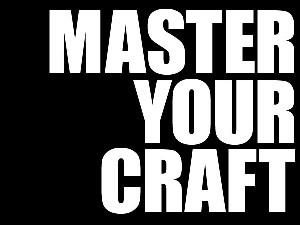Jeremie Averous's Blog, page 54
September 11, 2018
How DIfficult It Is To Replace GDP by an Appropriate Wealth Creation Measurement
Gross Domestic Product has its limitations and they become increasingly apparent as we enter the Collaborative Age. In particular, it does not measure the value created by all digital services including collaborative creation. This subject seems to have come back to the fore early 2018. A series of Quartz papers on the subject gives some insight: ‘One of the world’s largest banks wants to rip up the economic rulebook and downplay GDP‘, ‘Our obsession with GDP will lead to madness—but there are alternatives‘, ‘An ambitious project to measure the wealth of nations shows how GDP is a deceptive gauge of progress‘, etc.
 It has always been clear that GDP is an Industrial Age measurement with strong limitations. Yet it is a convenient summary of economic health. As we move into the Collaborative Age it needs to be replaced, but we are still unsure how or why. “One answer might be GDP-B, which is an ambitious project being developed by economists at MIT (pdf). It’s a broader metric to measure the economy by looking at how our well-being is changing, thanks to digital goods and services.” I recommend that you have a look at this presentation because it has very interesting
It has always been clear that GDP is an Industrial Age measurement with strong limitations. Yet it is a convenient summary of economic health. As we move into the Collaborative Age it needs to be replaced, but we are still unsure how or why. “One answer might be GDP-B, which is an ambitious project being developed by economists at MIT (pdf). It’s a broader metric to measure the economy by looking at how our well-being is changing, thanks to digital goods and services.” I recommend that you have a look at this presentation because it has very interesting
Whatever the new measure will be, we need to change and it is good at last that the subject comes up so powerfully in the public debate. Let’s hope it will remain there and we will be able to solve this conundrum.

September 8, 2018
How You Should Journal in Your Blog
Many self-development authors and speakers describe the benefits of holding a journal. It is even a trendy occupation with journal notebooks being produced specifically. I agree and disagree: journalling is good, but why not doing it in a blog?
 Holding a journal is a great way to take a few minutes self-reflection on current events impacting one’s life. It is also useful – sometimes amazing and sometimes sad – to come back to a former entry weeks or months afterwards. But nobody will ever benefit from your reflections and thoughts. So why not write them in a blog? Of course, deeply personal issues can’t be shared so easily, but what about your thoughts and reflections on what happens in the wider world? Writing them in a blog – even if no-one reads it – forces to reach a certain quality of output and thought which is a good challenge. And certainly, holding a blog with a fixed publication schedule forces me to sit down and reflect from time to time, even if I am very busy.
Holding a journal is a great way to take a few minutes self-reflection on current events impacting one’s life. It is also useful – sometimes amazing and sometimes sad – to come back to a former entry weeks or months afterwards. But nobody will ever benefit from your reflections and thoughts. So why not write them in a blog? Of course, deeply personal issues can’t be shared so easily, but what about your thoughts and reflections on what happens in the wider world? Writing them in a blog – even if no-one reads it – forces to reach a certain quality of output and thought which is a good challenge. And certainly, holding a blog with a fixed publication schedule forces me to sit down and reflect from time to time, even if I am very busy.
So, why not hold a blog instead of holding a journal?

September 6, 2018
How the Military Is Struggling to Position Itself on Autonomous Weapons
The issue of autonomous weapons creates a heated debate. There is a push to get them banned (see our previous post ‘Why the Terminator Conundrum Requires Active Anti-proliferation Policies‘ and ‘How Urgent It Is to Ban Autonomous AI Driven Weapons‘). However, at least in the western world, the military appears to be quite reluctant to push for full autonomy, in particular when deciding to use lethal force. This debate is reflected in an excellent interview by The Verge ‘The future of war will be fought by machines, but will humans still be in charge?‘.
 The interesting part I find, and I read about it also in other places too, is that the military is reluctant to leave the robot take lethal engagement decisions on its own. Autonomy allows the weapon to use less manpower for moving around, analysing threats, reporting on the situation; but when it comes to engagement, the military want to have a stop button. In addition, it is probably also a good idea in case autonomous weapons would stop from identifying separately friend and foe!
The interesting part I find, and I read about it also in other places too, is that the military is reluctant to leave the robot take lethal engagement decisions on its own. Autonomy allows the weapon to use less manpower for moving around, analysing threats, reporting on the situation; but when it comes to engagement, the military want to have a stop button. In addition, it is probably also a good idea in case autonomous weapons would stop from identifying separately friend and foe!
One concern is that this approach may not be followed by Russia or China, or potentially terrorist organisations that would use some form of autonomous weapons. Some also mention that this willingness to keep humans in the loop may stem from the fear of losing one’s job. In any case, developments in this area are interesting to follow, in particular when there might be, somewhere in the world, some actual small scale engagement of weapons more autonomous than the current contraptions. This might take some time though as I guess that the military will not want its technology to fall in the hands of the opponent!

How You Should Embrace Backlash
In the Quartz post ‘The most successful activists don’t fight backlash, they embrace it‘, the author explains how activists of such causes as gay, immigration climate change etc do in fact embrace resistance to progress their cause.
 Of course when there is change, there is resistance: “Where there are revolutions, protests, and massive legislative changes, there is always backlash. Sometimes this backlash is more powerful and influential than the initial change itself. Even simple acts of persuasion are readily met with a counterargument. Whether the interactions are big or small, humans are conditioned to fight back.”
Of course when there is change, there is resistance: “Where there are revolutions, protests, and massive legislative changes, there is always backlash. Sometimes this backlash is more powerful and influential than the initial change itself. Even simple acts of persuasion are readily met with a counterargument. Whether the interactions are big or small, humans are conditioned to fight back.”
However, “this doesn’t mean that progress is unattainable. Accepting backlash as inevitable can be a powerful way of conducting advocacy because it allows you to take control of the narrative and steer it towards your goals. There are two ways to embrace backlash and leverage it for change. Stoke it, or repurpose it.”. Stoking backlash means heightening the opposition getting your group united in opposing the resistance; re-purposing the backlash means playing with its expression form to create an opposite result.
It is good to meet resistance: it means we are actually achieving to move something. And embracing backlash and resistance is the way to progress, instead of opposing straight up. Would you find situations where the force should come from your opponent?

September 4, 2018
How Persuading Ourselves to Do Something Might Take the Longest
Seth Godin in his blog post ‘But why does it take so long?‘ makes the point that the time-frame to achieve various objectives can be very different. And that physical factors are not the limit when it comes to creative work: it is coordinating, persuading, pathfinding. Moreover, that what may take the longest of all is persuading ourselves to go for it.
 I find this statement quite to the point: it is true that what often takes the longest in all projects is the decision to go for it. Self-persuasion is a major hindrance. Even more so when we have to persuade ourselves against the opinion of our environment.
I find this statement quite to the point: it is true that what often takes the longest in all projects is the decision to go for it. Self-persuasion is a major hindrance. Even more so when we have to persuade ourselves against the opinion of our environment.
The total time to achieve a project is thus too often driven by the time we need to persuade ourselves to go for it. Isn’t that a major issue in a world where projects need to be developed always quicker before they become obsolete? There is a pressure and a benefit to those that can persuade themselves quicker that it is worth trying the project.
This statement gives quite a useful insight on some critical success factors in today’s world. Let’s take less time to persuade ourselves before we go for it. Maybe experiment more at small scale before going for it at a large scale.. which beings us back to the lean startup and other considerations that aim at lowering the barrier for action.

September 1, 2018
How Companies Should Promote Senior Management from Inside
A few interesting points can be noted from the very interesting post by Dom Moorhouse: ‘Identifying and developing your senior leadership team | Five buckets‘. In this post, we will develop his thoughts about the senior management team. The post is specifically applicable to service companies such as consulting companies, but the concept can probably be applied to a wider range of businesses.
 Dom Moorhouse states: “As a general rule-of-thumb – backed up by some tough lessons learned personally – I would strongly encourage you to develop your seniors, as feasible, from within your company as opposed to hiring from outside. The risk of external hiring grows the more senior the position.” The rational is that this practice is much less risky specifically on the critical issue of values alignment.
Dom Moorhouse states: “As a general rule-of-thumb – backed up by some tough lessons learned personally – I would strongly encourage you to develop your seniors, as feasible, from within your company as opposed to hiring from outside. The risk of external hiring grows the more senior the position.” The rational is that this practice is much less risky specifically on the critical issue of values alignment.
I would personally temper a bit this affirmation. It depends on the life phase of the business. If a transformation is required with an influx of new ideas from outside, hiring a senior executive from outside might be the right course. However it general it is quite right that it is preferable to hire from inside. Therefore, an active development and promotion scheme needs to be implemented to achieve this objective.
Have you thought in your business – if you are beyond the start-up phase, how you will identify and develop the future senior managers?

August 30, 2018
How Discovering and Developing One’s Passion Needs to be An Active Quest
In the never-ending debate about whether we should discover our passion and then work on it, or work and discover our passion in what we are doing, another piece of the puzzle is brought by the Quartz post ‘“Find your passion” is bad advice, say Yale and Stanford psychologists‘.
 The gist of the thesis of this post is that “Your passion isn’t out there, waiting to be discovered. It’s not a mysterious force that will—when found—remove all obstacles from your path. In fact, psychologists argue in a new study that the pithy mantra “find your passion” may be a dangerous distraction.” “The directive to “find your passion” suggests a passive process. Telling people to develop their passion, however, suggests an active one that depends on us—and allows that it can be challenging to pursue. This, the psychologist says, “is a realistic way of thinking.””
The gist of the thesis of this post is that “Your passion isn’t out there, waiting to be discovered. It’s not a mysterious force that will—when found—remove all obstacles from your path. In fact, psychologists argue in a new study that the pithy mantra “find your passion” may be a dangerous distraction.” “The directive to “find your passion” suggests a passive process. Telling people to develop their passion, however, suggests an active one that depends on us—and allows that it can be challenging to pursue. This, the psychologist says, “is a realistic way of thinking.””
The advice is thus to demonstrate a growth mindset and not wait passively for passion to uncover itself and develop by itself. I am very much in tune with this approach – although being passionate makes it easier to spend the hours, getting the best at it still requires enormous work and commitment. Having a growth mindset, taking advantage of the opportunities that surround us to develop our passion, experiment and discover more in detail what it is all about, is the way.
Discovering your passion in detail is certainly a way of active search and development, and of demonstrating a growth mindset. Passion is a process.

August 28, 2018
How You Should See Your Work As Your Craft
Robin Sharma writes “See your work as your craft. Sweat the tiniest of details and push yourself to produce outright magic. For there your greatness lives.”
 This excellent quote reminds us that we need to make sure that we put our entire attention and intent in whatever we produce, every day.
This excellent quote reminds us that we need to make sure that we put our entire attention and intent in whatever we produce, every day.
That it is important to be attentive to details and try to improve our production every time so that it really becomes a craft that distinguishes us. A craft that satisfies us and contents us.
A craft that makes us great.

August 25, 2018
How Startup Founders Should Not Work for Free
In his post ‘Pervasive Startup Myth: Don’t Work for Free’, Tim Berry explains why investors are generally not impressed by start-up founders working for free: “Investors want people committed to working their startups, and that usually takes getting them paid“.
 From my perspective and experience, there are lots of good reasons for not working for free and a few caveats:
From my perspective and experience, there are lots of good reasons for not working for free and a few caveats:
working for free or cheap will not demonstrate if your business model really works at the normal price it should command, and the market price of the contributors,
working for free or cheap does not favorably reflect on the value you provide to the client,
entrepreneurs still have to provide for their family, and even if their significant other can compensate for a while, it is not a sustainable proposition.
There are a few caveats from my experience and practice though:
In my companies we do account for what the founders or partners should get paid but we may postpone payment of part of it to protect cash flow, which is what really counts in startups growing rapidly (fixed salary would be typically be quite low, and ‘bonuses’ paid when cash flow is good),
There are instances where working cheap to establish oneself in a new market might be a conscious choice. It comes with the difficulty of raising prices later, so should rather be presented as a special discount against a normal price rather than a low price,
Sometimes working for a low price but being compensated on knowledge and exposure might be a good deal, but it needs to be strictly limited in time.
So, strop working for free when you deliver value to your clients: stop devaluating yourselves!

August 23, 2018
How to Find Peacefulness in the Midst of Chaos Without Escaping
In his post ‘A Life of Peacefulness‘, Leo Babauta makes an extremely interesting point: when faced with chaos and stress, our first reaction may be some kind of escapism (I am myself guilty of it, sometimes). What we should do though is to learn how to remain peaceful in this environment.
 I quite like the list all the different types of escapism he mentions, like:
I quite like the list all the different types of escapism he mentions, like:
“Try to get our world in order, trying to control everything
Hide from all the things we do, try not to think about it all
Complain about it, about the burden of it all
etc.“
And I could certainly add more to the list. Whether real escape and flight, or only in our mind, it is true that we tend to escape difficult situation in one way or the other.
The revolutionary approach he mentions of instead trying to be internally peaceful in the midst of the storm is an interesting one, although certainly quite tough to achieve. He proposes 3 steps:
Face the difficulty
Open & Relax
Take the next step, in peace
How about trying to apply this framework to your current chaos?




